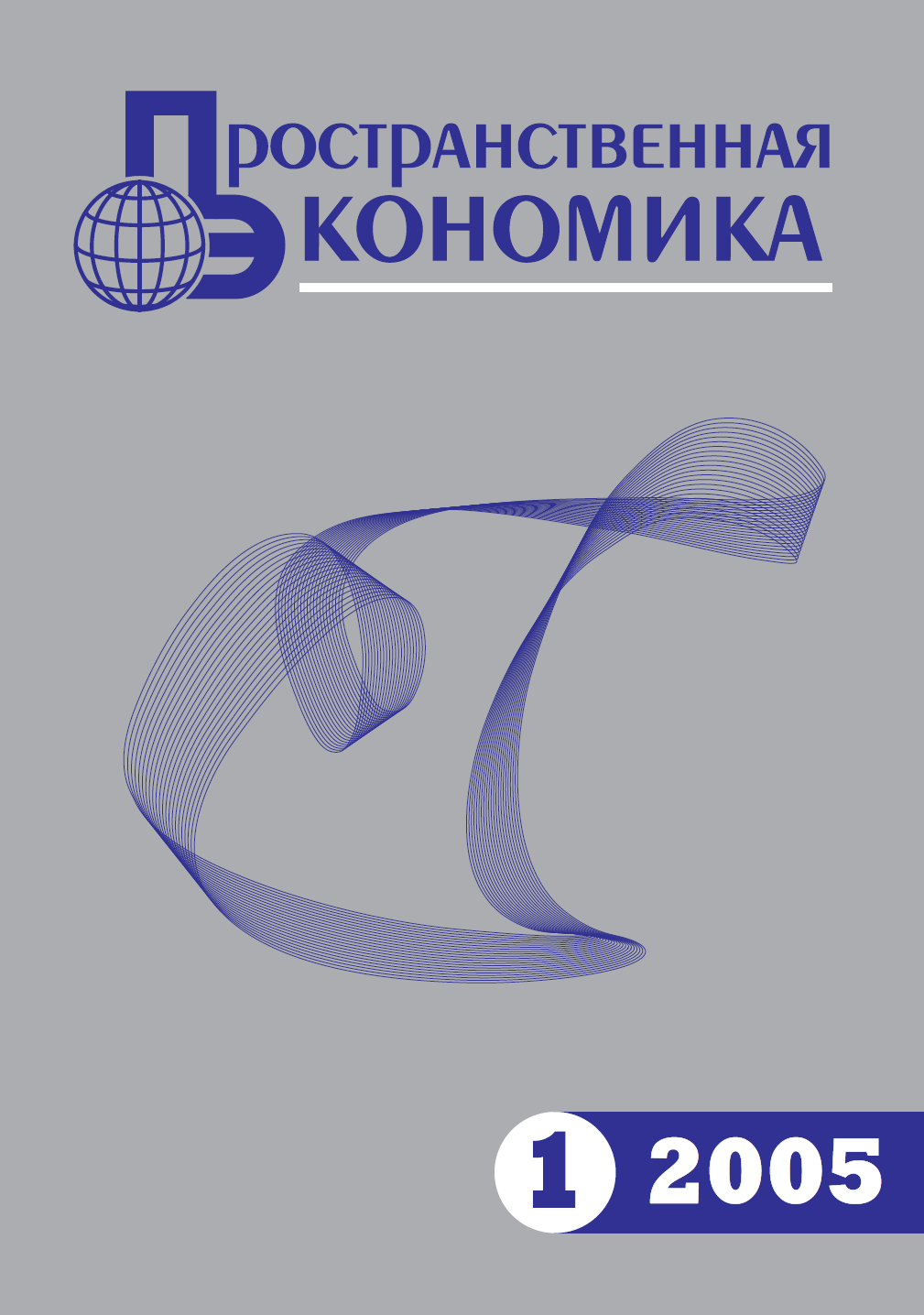| In the section | Articles |
| Title of the article | Peculiarities of the Spatial Distribution of Productive Forces in the Old-Industrial Area |
| Pages | 28-43 |
| Author 1 | Alexander Ivanovich Tatarkin Doctor of Economics, Professor, Academician of RAS, Director. Institute of economy UB RAS 29 Moskovskaya Street, Yekaterinburg, Russia; 620014 This email address is being protected from spambots. You need JavaScript enabled to view it. |
| Author 2 | Irina Valeryevna Makarova Doctor of Economics, Associate Professor, Sector Head Institute of economy UB RAS 29 Moskovskaya Street, Yekaterinburg, Russia; 620014 This email address is being protected from spambots. You need JavaScript enabled to view it. |
| Author 3 | Alexander Petrovich Petrov Candidate Economics Deputy of the State Duma of the Russian Federation, Member of Committee on Public Health 2 Georgievsky per., Moscow, Russia, 103265 This email address is being protected from spambots. You need JavaScript enabled to view it. |
| Author 4 | Lidiya Mikhaylovna Averina Leading Economist Institute of economy UB RAS 29 Moskovskaya Street, Yekaterinburg, Russia; 620014 This email address is being protected from spambots. You need JavaScript enabled to view it. |
| Abstract | On the example of Sverdlovsk region the authors analyze the distribution of the most important objects of modernization and new construction in the old-industrial area. Considered complexes have three stages of adaptation to changing business circumstances. For each identified phase the authors define the main trends of accommodation and key factors. The study characterizes the metallurgy industry in the following way: the first stage needs point modernization to improve product quality and acquisition of assets of other enterprises in the framework of a unified technological chain for the strengthening of the mineral resources base; the second stage involves the implementation of technical re-equipment programs and production modernization, new construction on reclaimed areas and production diversification; the third stage includes the development of holding companies. For engineering complex the authors consider following: the 1st phase involves the establishment of new manufactures to equip financially viable sectors of the economy and creation of innovative production at defense enterprises within the framework of conversion programs; the 2nd phase needs the restructuring of large machine-building companies; the enhancing of interaction between large and small enterprises of the complex; the formation of engineering companies; the development of integration processes in the defense industry; the establishment of specialized regional technological centers; creation and development of industrial parks; development of new sectors in mechanical engineering; and the 3rd phase includes the development of cluster forms of organization and functioning of industrial enterprises. |
| Code | 332.01 |
| DOI | 10.14530/se.2013.4.028-043 |
| Keywords | ♦ Old industrial region ♦ metallurgical complex ♦ machine-building complex ♦ objects of modernization and new construction ♦ feature of placement ♦ Sverdlovsk region |
| Download | SE.2013.4.028-043.Tatarkin.pdf |
| For citation | Tatarkin A.I., Makarova I.V., Petrov A.P., Averina L.M. Peculiarities of the Spatial Distribution of Productive Forces in the Old-Industrial Area. Prostranstvennaya Ekonomika = Spatial Economics, 2013, no. 4, pp. 28-43. DOI: 10.14530/se.2013.4.028-043. (In Russian). |
| References | 1. Demyanenko A. N., Izotov D. A., Demyanenko N. A., Ukrainsky V. N. «Clusters», «TPC», «Growth Poles» in Russia’s Science Journals. Prostranstvennaya Ekonomika – Spatial Economics, 2011, no. 1, pp. 93–196. (In Russian). 2. Kleiner G. System Economics as a Platform for Development of Modern Economic Theory. Voprosy Ekonomiki [Economic Issue], 2013, no. 6, pp. 4–28. (In Russian). 3. Makarova I.V., Maksimov A.D. Strategic Guidelines of Technologic Modernization of Russian Regions Industry. Kreativnaya Ekonomika [Creative Economy], 2012, no. 5, pp. 59–65. (In Russian). 4. Melnikov A.E. Theoretical-Methodological Approaches to Ensuring Sustainable Development of the Region. Zhurnal Ekonomicheskoy Teorii [Journal of Economic Theory], 2011, no. 3, pp. 198 – 201. (In Russian). 5. The program of Development of Cooperation on the Territory of Sverdlovsk Region up to 2020. Edited by A.I. Tatarkin, A.L. Gredin. Ekateriburg: The Government of Sverdlovsk Territory, The Institute of Economics of Ural Branch of the Russian Academy of Sciences, 2009, 380 p. (In Russian). 6. Safina E. B. Chain Reactions in the Local Economic Space: Direction, Reflexivity, Mutual Relations. Problemy Sovremennoy Ekonomiki – Problems of Modern Economics, 2013, no. 1 (45), pp. 147–150. (In Russian). 7. Tatarkin A.I., Doroshenko S.V.. The Region as a Self-Developing Socio-Economic System: the Crossing of the Crisis. Ekonomika regiona [Regional Economy], 2011, no. 1, pp. 15–23. (In Russian). 8. Tretyak O.A., Rumyantseva M N. Network Forms of Inter-Firm Cooperation: Approaches to Explanation of the Phenomena. Rossiyskiy Zhurnal Menedzhmenta – Russian Management Journal, 2003, no.2, pp. 25–50. (In Russian). 9. Shchedrovskiy P.G., Knyaginina V.N. Territorial Projection of Industrial Policy of Russia: Who will Pay the Costs of Globalization. Modern National Industrial Policy of Russia. Vol. 2 (regional aspect). Available at: http//www.shkp.ru (accessed August 2013). (In Russian). |
| Financing | |
| Date |
